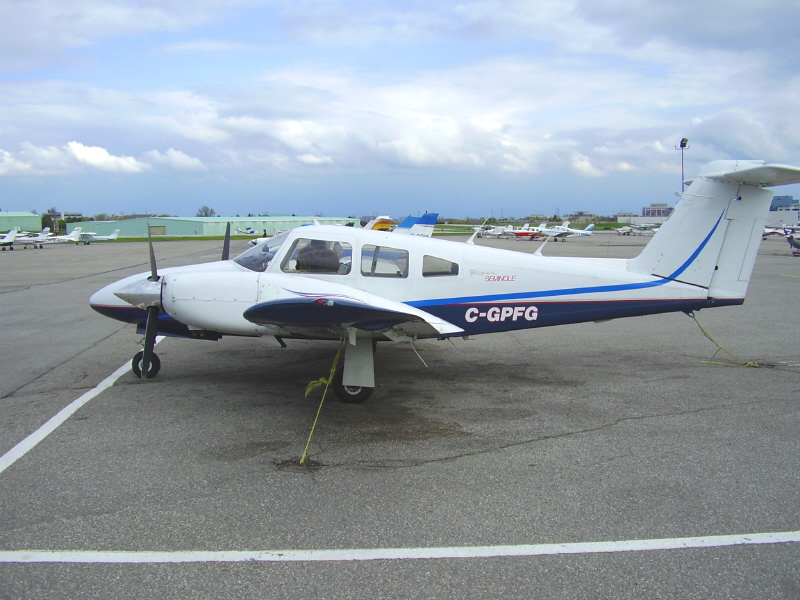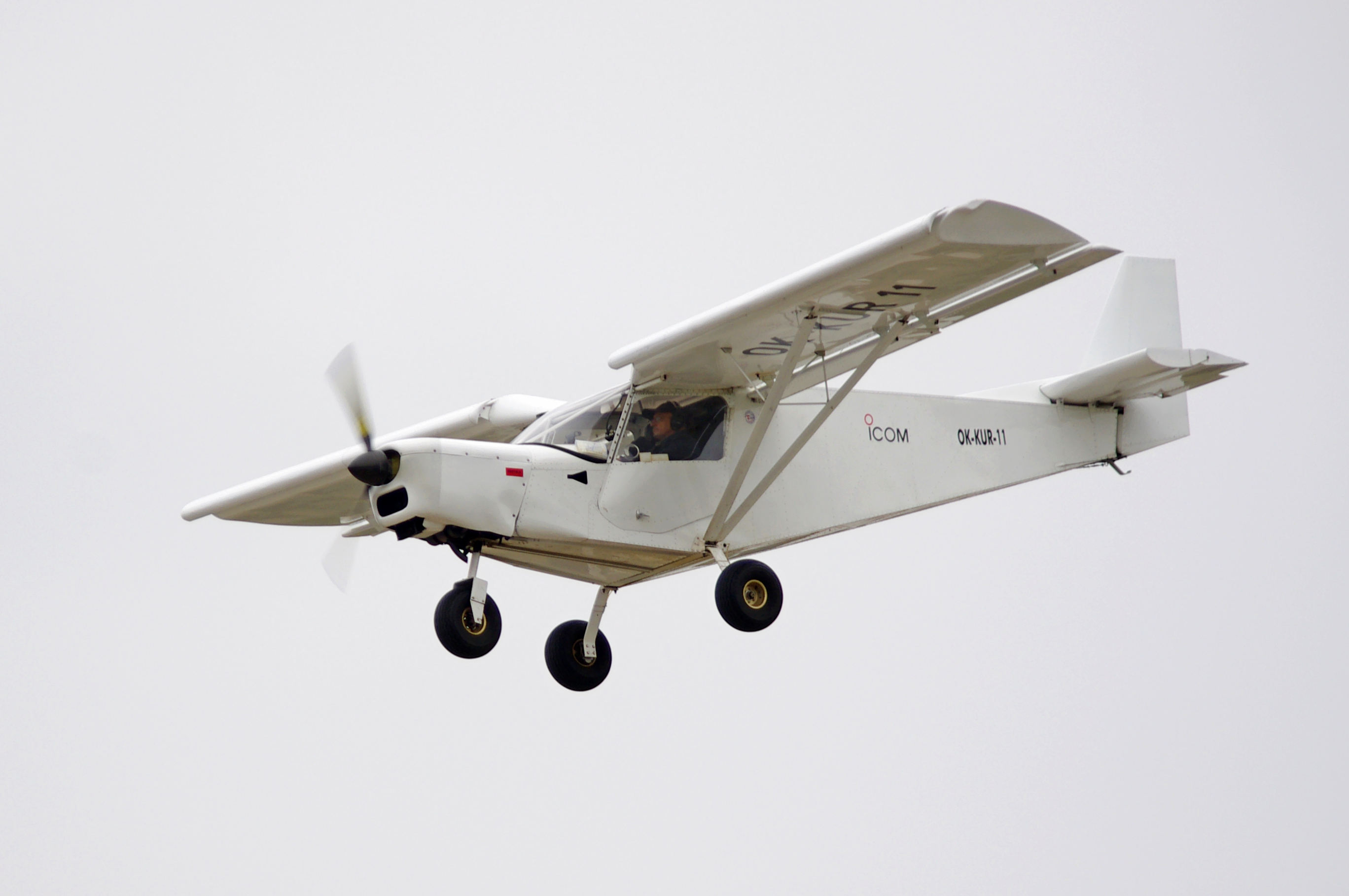|
Maule M-7
The Maule M-7 is a family of single-engine light aircraft that has been manufactured in the United States since the mid-1980s. Design and development Based on the Maule M-4, it is a high-wing, strut-braced monoplane of conventional configuration, available with tailwheel or optional tricycle wheeled undercarriage and frequently used as a floatplane with twin floats. The basic M-7 has a longer cabin than its predecessors the M-5 & M-6, with two seats in front, a bench seat for up to three passengers behind them, and (like the M-6) an optional third row of "kiddie seats" at the rear.Simpson 1995, 242 Extra cabin windows can be fitted if the "kiddie seats" are to be used. The MX-7 uses the same fuselage as the M-6,which is a modified M-5 fuselage but the same wing span as the M-5,''Jane's All the World's Aircraft 1985–86'', 448 and incorporates the increased fuel tankage, Hoerner-style wingtips and five-position flaps designed for the M-7."Private Aircraft Buyers' Guide" ... [...More Info...] [...Related Items...] OR: [Wikipedia] [Google] [Baidu] |
Maule Air
Maule Air, Inc. is a manufacturer of light, single-engined, short take-off and landing (STOL) aircraft, based in Moultrie, Georgia, U.S. The company delivered 2,500 aircraft in its first 50 years of business. History Belford D. Maule (1911–1995) designed his first aircraft, the M-1 starting at age 19. He founded the company Mechanical Products Co. in Napoleon, Michigan to market his own starter design. In 1941 the B.D. Maule Co. was founded, and Maule produced tailwheels and fabric testers. In 1953 he began design work, and started aircraft production with the "Bee-Dee" M-4 in 1957. The company is a family-owned enterprise. Its owner, June Maule, widow of B. D. Maule, remained directly involved with factory production until her death in 2009 at the age of 92. Products The aircraft produced by Maule Air are tube-and-fabric designs and are popular with bush pilots thanks to their very low stall speed, tundra tires and oleo strut landing gear. Most Maules are built with t ... [...More Info...] [...Related Items...] OR: [Wikipedia] [Google] [Baidu] |
Lycoming O-360
The Lycoming O-360 is a family of four-cylinder, direct-drive, horizontally opposed, air-cooled, piston aircraft engines. Engines in the O-360 series produce between , with the basic O-360 producing . The engine family has been installed in thousands of aircraft, including the Cessna 172, Piper Cherokee/Archer, Grumman Tiger, and many home-built types. It has a factory rated time between overhaul (TBO) of 2000 hours or twelve years. O-360 family engines are also widely used in airboats, most notably in the Hurricane Aircats used by the US Army during the Vietnam War. The first O-360 certified was the A1A model, certified on 20 July 1955 to United States CAR 13 effective March 5, 1952 as amended by 13-1 and 13-2. The Lycoming IO-390 is an O-360 which has had its cylinder bore increased by , developing . Series The O-360 family of engines comprises 167 different models with 12 different prefixes. All have a displacement and bore and stroke. * O-360 carbureted seri ... [...More Info...] [...Related Items...] OR: [Wikipedia] [Google] [Baidu] |
STOL Aircraft
A short takeoff and landing (STOL) aircraft is a fixed-wing aircraft that can takeoff/land on short runways. Many STOL-designed aircraft can operate on airstrips with harsh conditions (such as high altitude or ice). STOL aircraft, including those used in scheduled passenger airline operations, can be operated from STOLport airfields that feature short runways. Design STOL aircraft come in configurations such as bush planes, autogyros, and taildraggers, and those such as the de Havilland Canada Dash-7 that are designed for use on conventional airstrips. The PAC P-750 XSTOL, the Daher Kodiak, the de Havilland Canada DHC-6 Twin Otter and the Wren 460 have STOL capability, needing a short ground roll to get airborne, but are capable of a near-zero ground roll when landing. For any plane, the required runway length is a function of the square of the stall speed (minimum flying speed), and much design effort is spent on minimizing this number. For takeoff, large power/weigh ... [...More Info...] [...Related Items...] OR: [Wikipedia] [Google] [Baidu] |
Aircraft First Flown In 1984
An aircraft ( aircraft) is a vehicle that is able to fly by gaining support from the air. It counters the force of gravity by using either static lift or the dynamic lift of an airfoil, or, in a few cases, direct downward thrust from its engines. Common examples of aircraft include airplanes, rotorcraft (including helicopters), airships (including blimps), gliders, paramotors, and hot air balloons. Part 1 (Definitions and Abbreviations) of Subchapter A of Chapter I of Title 14 of the U. S. Code of Federal Regulations states that aircraft "means a device that is used or intended to be used for flight in the air." The human activity that surrounds aircraft is called ''aviation''. The science of aviation, including designing and building aircraft, is called ''aeronautics.'' Crewed aircraft are flown by an onboard pilot, whereas unmanned aerial vehicles may be remotely controlled or self-controlled by onboard computers. Aircraft may be classified by different criteria, such as ... [...More Info...] [...Related Items...] OR: [Wikipedia] [Google] [Baidu] |
High-wing Aircraft
A monoplane is a fixed-wing aircraft configuration with a single mainplane, in contrast to a biplane or other types of multiplanes, which have multiple wings. A monoplane has inherently the highest efficiency and lowest drag of any wing configuration and is the simplest to build. However, during the early years of flight, these advantages were offset by its greater weight and lower manoeuvrability, making it relatively rare until the 1930s. Since then, the monoplane has been the most common form for a fixed-wing aircraft. Characteristics Support and weight The inherent efficiency of the monoplane is best achieved in the cantilever wing, which carries all structural forces internally. However, to fly at practical speeds the wing must be made thin, which requires a heavy structure to make it strong and stiff enough. External bracing can be used to improve structural efficiency, reducing weight and cost. For a wing of a given size, the weight reduction allows it to fly slower an ... [...More Info...] [...Related Items...] OR: [Wikipedia] [Google] [Baidu] |
Maule Aircraft
Maule Air, Inc. is a manufacturer of light, single-engined, short take-off and landing (STOL) aircraft, based in Moultrie, Georgia, U.S. The company delivered 2,500 aircraft in its first 50 years of business. History Belford D. Maule (1911–1995) designed his first aircraft, the M-1 starting at age 19. He founded the company Mechanical Products Co. in Napoleon, Michigan to market his own starter design. In 1941 the B.D. Maule Co. was founded, and Maule produced tailwheels and fabric testers. In 1953 he began design work, and started aircraft production with the "Bee-Dee" M-4 in 1957. The company is a family-owned enterprise. Its owner, June Maule, widow of B. D. Maule, remained directly involved with factory production until her death in 2009 at the age of 92. Products The aircraft produced by Maule Air are tube-and-fabric designs and are popular with bush pilots thanks to their very low stall speed, tundra tires and oleo strut landing gear. Most Maules are built with ta ... [...More Info...] [...Related Items...] OR: [Wikipedia] [Google] [Baidu] |
1980s United States Civil Utility Aircraft
__NOTOC__ Year 198 (CXCVIII) was a common year starting on Sunday of the Julian calendar. At the time, it was known as the Year of the Consulship of Sergius and Gallus (or, less frequently, year 951 ''Ab urbe condita''). The denomination 198 for this year has been used since the early medieval period, when the Anno Domini calendar era became the prevalent method in Europe for naming years. Events By place Roman Empire *January 28 **Publius Septimius Geta, son of Septimius Severus, receives the title of Caesar. **Caracalla, son of Septimius Severus, is given the title of Augustus. China *Winter – Battle of Xiapi: The allied armies led by Cao Cao and Liu Bei defeat Lü Bu; afterward Cao Cao has him executed. By topic Religion * Marcus I succeeds Olympianus as Patriarch of Constantinople (until 211). Births * Lu Kai, Chinese official and general (d. 269) * Quan Cong, Chinese general and advisor (d. 249) Deaths * Li Jue, Chinese warlord and regent ... [...More Info...] [...Related Items...] OR: [Wikipedia] [Google] [Baidu] |
Flight International
''Flight International'', formerly ''Flight'', is a monthly magazine focused on aerospace. Published in the United Kingdom and founded in 1909 as "A Journal devoted to the Interests, Practice, and Progress of Aerial Locomotion and Transport", it is the world's oldest continuously published aviation news magazine. ''Flight International'' is published by DVV Media Group. Competitors include Jane's Information Group and '' Aviation Week''. Former editors of, and contributors include H. F. King, Bill Gunston, John W. R. Taylor and David Learmount. History The founder and first editor of ''Flight'' was Stanley Spooner. He was also the creator and editor of ''The Automotor Journal'', originally titled ''The Automotor Journal and Horseless Vehicle''.Guide To British Industrial His ... [...More Info...] [...Related Items...] OR: [Wikipedia] [Google] [Baidu] |
Constant Speed Propeller
Constant or The Constant may refer to: Mathematics * Constant (mathematics), a non-varying value * Mathematical constant, a special number that arises naturally in mathematics, such as or Other concepts * Control variable or scientific constant, in experimentation the unchanging or constant variable * Physical constant, a physical quantity generally believed to be universal and unchanging * Constant (computer programming), a value that, unlike a variable, cannot be reassociated with a different value * Logical constant In logic, a logical constant or constant symbol of a language \mathcal is a symbol that has the same semantic value under every interpretation of \mathcal. Two important types of logical constants are logical connectives and quantifiers. The e ..., a symbol in symbolic logic that has the same meaning in all models, such as the symbol "=" for "equals" People * Constant (given name) * Constant (surname) * John, Elector of Saxony (1468–1532), known a ... [...More Info...] [...Related Items...] OR: [Wikipedia] [Google] [Baidu] |
Hartzell Propeller
Hartzell Propeller is an American manufacturer that was founded in 1917 by Robert N. Hartzell as the Hartzell Walnut Propeller Company. It produces composite and aluminum propellers for certified, homebuilt, and ultralight aircraft. The company is headquartered in Piqua, Ohio.Purdy, Don: ''AeroCrafter - Homebuilt Aircraft Sourcebook'', page 84. BAI Communications. Hartzell also produces spinners, governors, ice protection systems, and other propeller controls. History Robert Hartzell grew up in the village of Oakwood, Ohio, just a block from Hawthorn Hill, where Orville Wright lived. From the 1890s until the late 1910s, Hartzell's father and grandfather operated a sawmill and lumber supply company in Greenville, Ohio (later moved to Piqua, Ohio) that also manufactured items such as wagons and gun stocks for World War I. On the side, Robert owned a small airplane and did maintenance on it as a young man. In 1917, Orville Wright suggested that Hartzell use his wal ... [...More Info...] [...Related Items...] OR: [Wikipedia] [Google] [Baidu] |
Aircraft Engine
An aircraft engine, often referred to as an aero engine, is the power component of an aircraft propulsion system. Aircraft using power components are referred to as powered flight. Most aircraft engines are either piston engines or gas turbines, although a few have been rocket powered and in recent years many small UAVs have used electric motors. Manufacturing industry The largest manufacturer of turboprop engines for general aviation is Pratt & Whitney. General Electric announced in 2015 entrance into the market. Development history * 1903: Manly-Balzer engine sets standards for later radial engines. * 1910: Coandă-1910, an unsuccessful ducted fan aircraft exhibited at Paris Aero Salon, powered by a piston engine. The aircraft never flew, but a patent was filed for routing exhaust gases into the duct to augment thrust. * 1914: Auguste Rateau suggests using exhaust-powered compressor – a turbocharger – to improve high-altitude performance; not accepted after the ... [...More Info...] [...Related Items...] OR: [Wikipedia] [Google] [Baidu] |




